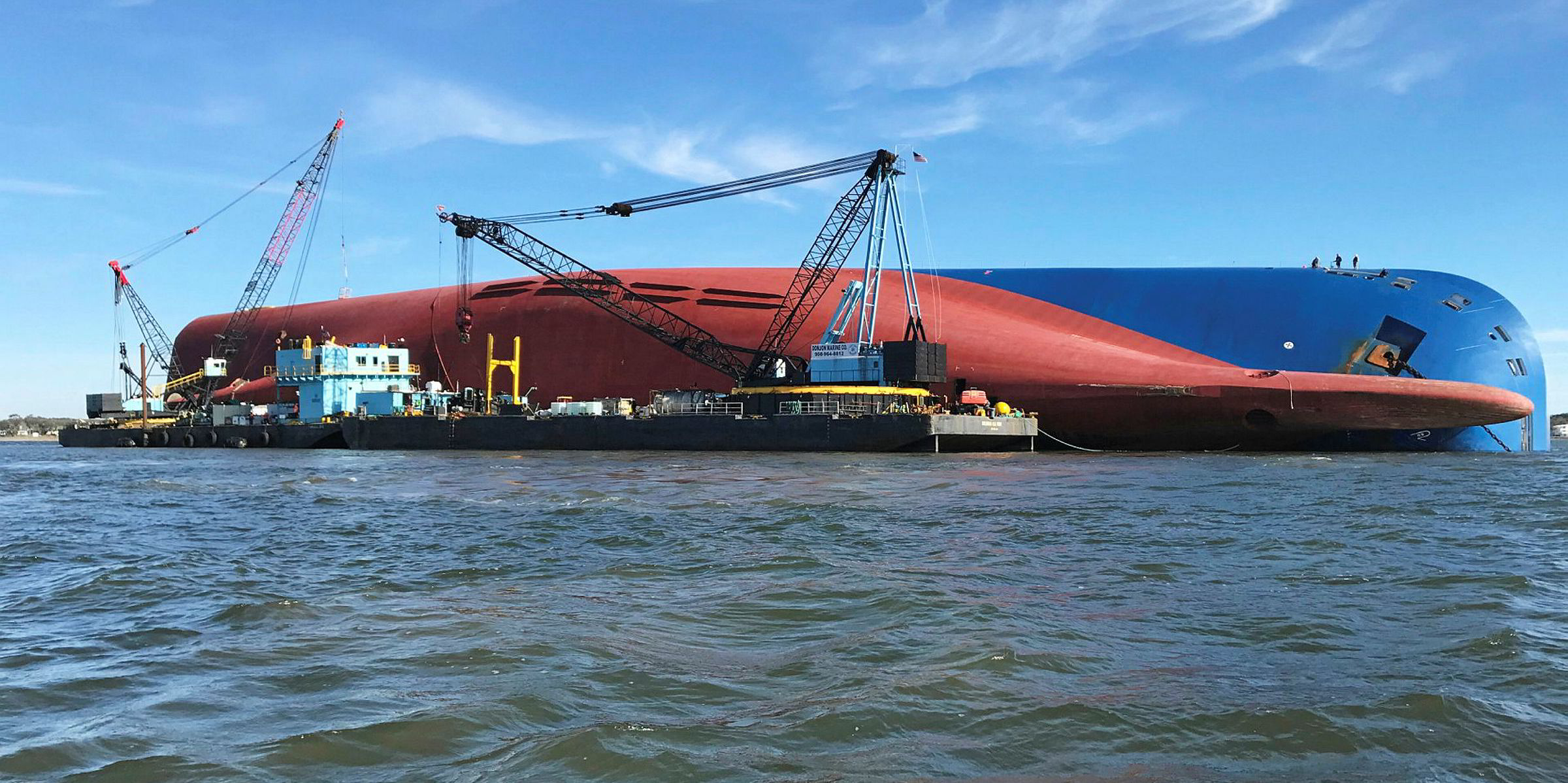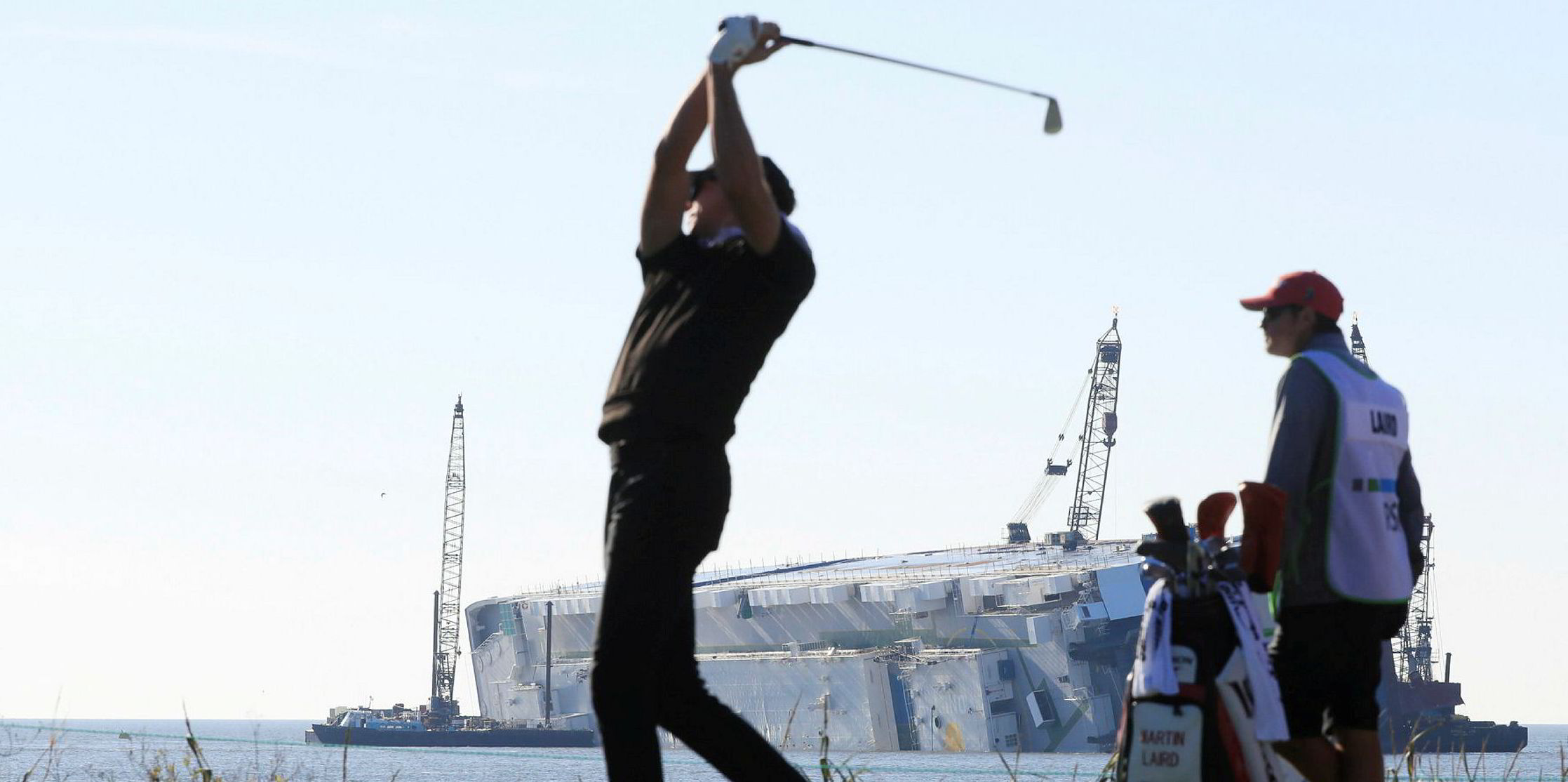US salvage firm T&T Salvage has won the contract to break up the grounded wreck of a Hyundai Glovis car carrier at the US port of Brunswick.
It has emerged that the wreck removal plan for the 71,000-gt Golden Ray (built 2017) will involve extensive additional environmental protection measures, which are set to push up the price of an already expensive job.
T&T Salvage now takes over the salvage operation from the Donjon Marine and Smit Salvage partnership, which had overseen the initial emergency response and pollution containment operations.
The wreck removal job involves dismantling the car carrier on site and taking it away for recycling piece by piece. The wreck removal project is being managed by St Simons Sound Incident Response Unified Command (Unified Command).
In a statement, incident commander Chris Graff described the salvage job as “one of the most complicated marine casualty responses in US history”.
Texas-based T&T Salvage has already begun work on the job and the propeller and rudder have been removed from the ship. However, it is estimated the wreck removal could take up to a year to complete.
Following the appointment of T&T Salvage, US Coast Guard commander Matt Baer said: “This is a big step forward in this response, but there is still a significant amount of work to be done.”
Baer said the wreck removal project would prioritise the protection of the environment. The idea is to construct a barrier around the ship to prevent any pollution spreading resulting from the wreck removal.
Although booms and oil spill containment equipment are often used around wreck removal jobs, it is rare for a barrier to be constructed around a demolition site.
Donjon and Smit have already completed the work of removing fuel oil and pollutants from the ship. However, there are around 4,000 new cars onboard, each of which will contain a small amount of fuel and oil which are a potential environmental threat.
Mitigating risk
“While we cannot operate without risk, the Unified Command remains focused on mitigating the overall risk to the environment while ensuring the safe removal of the ship. The next phase will include construction of an environmental protection barrier. We have not made a decision on exactly what type of barrier will be constructed given the complex nature of the response, but we are close,” Baer said.
There has been no disclosure on the wreck removal contract value but the cost of previous similar car carrier wreck removal jobs has ranged between $50m and $75m.
However, the removal of the Golden Ray could be well in excess of that amount.
The cost of the wreck removal will be met by protection and indemnity insurer North P&I Club. North P&I has already informed the International Group of P&I Clubs, under which claims over $10m are shared under a pooling system, that the Golden Ray claim is likely to be well in excess of $100m.
However, that figure also includes part of the cargo loss as well as the wreck removal and salvage costs.
The job is likely to be complex. When it capsized in September last year, it was judged too large to lift using cranes and the decision was taken to break the vessel up.
The length of time the ship has been aground is likely to mean that it has sunk deeper into the seabed making the salvage more complicated.
The cause of the initial capsize is still under investigation.






